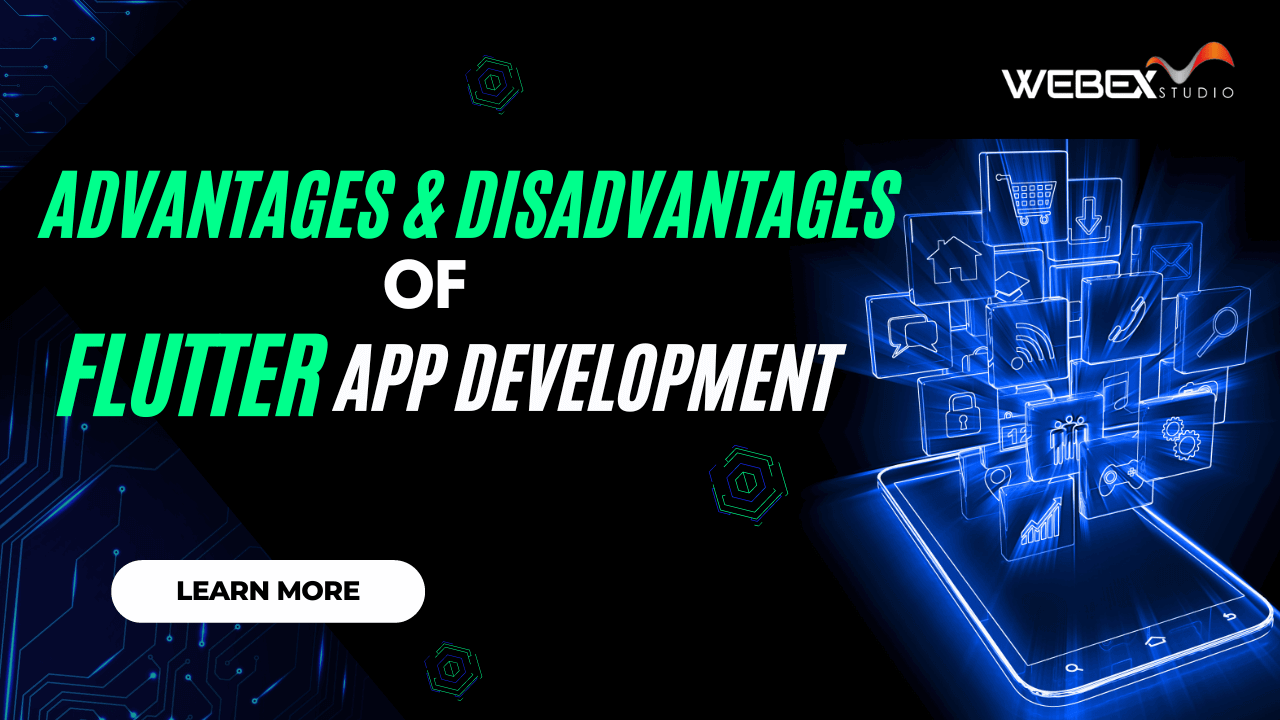In the fast-paced world of mobile app development, developers are always on the lookout for efficient tools that can help them build high-quality applications quickly. Flutter, a UI toolkit from Google, has been making waves in the app development community due to its unique features and capabilities. This article aims to provide a comprehensive outline of the pros and cons of using Flutter for app development. We will delve into various aspects of Flutter, including its benefits and limitations, to help you make an informed decision when considering this framework for your next project.
Pros of App Development with Flutter
Check out the advantages of flutter app development:
Fast and Hot Reload
Flutter’s hot reload feature allows developers to see changes instantly, making the development process faster and more efficient. This helps in quickly iterating through designs and fixing bugs.
Single Codebase, Multiple Platforms
One of the biggest advantages of Flutter is its ability to create apps for both Android and iOS platforms using a single codebase. This significantly reduces development time and effort.
Expressive UI with Widgets
Flutter offers a rich set of customizable widgets, enabling developers to create visually appealing and engaging user interfaces that can be tailored to specific platforms.
Native Performance
Flutter apps are compiled directly to native code, ensuring high performance and a smooth user experience. The framework’s architecture eliminates the need for a JavaScript bridge, leading to faster execution.
Active Community and Support
Flutter has a large and active community of developers, which means there are plenty of resources, libraries, and packages available to help solve problems and streamline development.
Open-source and Free
Flutter is an open-source framework, making it accessible to developers worldwide at no cost. This fosters collaboration and continuous improvement within the community.
Ideal for MVP Development
Flutter’s fast development cycle and cross-platform capabilities make it an excellent choice for Minimum Viable Product (MVP) development, allowing businesses to validate their ideas quickly.
Custom Animations
The built-in animation library in Flutter enables developers to create smooth and customized animations, enhancing the user experience.
Material Design and Cupertino
Flutter supports both Material Design (Android) and Cupertino (iOS) widgets, making it easier to maintain platform-specific aesthetics.
High-Quality Documentation
Google provides comprehensive and well-maintained documentation for Flutter, making it easier for developers to get started and learn the framework.
Cons of App Development with Flutter
Below are the disadvantages of app development using Flutter:
Large App Size
One of the primary drawbacks of Flutter is the larger app size compared to native apps. This is because Flutter apps include the entire Flutter engine, which can increase the download size.
Limited Native Functionality
Although Flutter has plugins to access native device functionalities, it may not have full access to all platform-specific features, leading to some limitations.
Learning Curve
While Flutter is relatively easy to learn for developers familiar with Dart or other programming languages, it may have a steeper learning curve for those new to mobile app development.
Limited Libraries
Although Flutter has a growing library of packages, it may not have as many options as other more established frameworks like React Native.
iOS App Review Guidelines
Apple’s App Store review process may sometimes be stricter with Flutter apps, leading to potential delays or rejections during the submission process.
Plugin Compatibility
As Flutter is a relatively new framework, some plugins may not be fully compatible with the latest versions, causing compatibility issues.
Performance on Older Devices
While Flutter performs exceptionally well on modern devices, it may not be as efficient on older devices with lower processing power.
Not Ideal for Intensive Graphics
Flutter may not be the best choice for apps that require intense 3D graphics or heavy gaming elements, as it may not match the performance of native development in such cases.
Limited TVOS and WatchOS Support
Flutter has limited support for building apps for tvOS and watchOS, making it less suitable for some specific use cases.
Dependency on Google
As an open-source project maintained by Google, there might be concerns about the level of control and dependency on the company’s decisions regarding the framework’s future.
Conclusion
Flutter has emerged as a powerful and versatile framework for app development. Its cross-platform capabilities, expressive UI, and fast development cycle make it a compelling choice for developers worldwide. While it may have some limitations, the pros of using Flutter outweigh the cons for many development projects. As Flutter continues to evolve with an active community and ongoing improvements, it is likely to become an even more dominant player in the app development landscape.
 +91 861 772 4646
+91 861 772 4646  +1 415 475 8743
+1 415 475 8743 